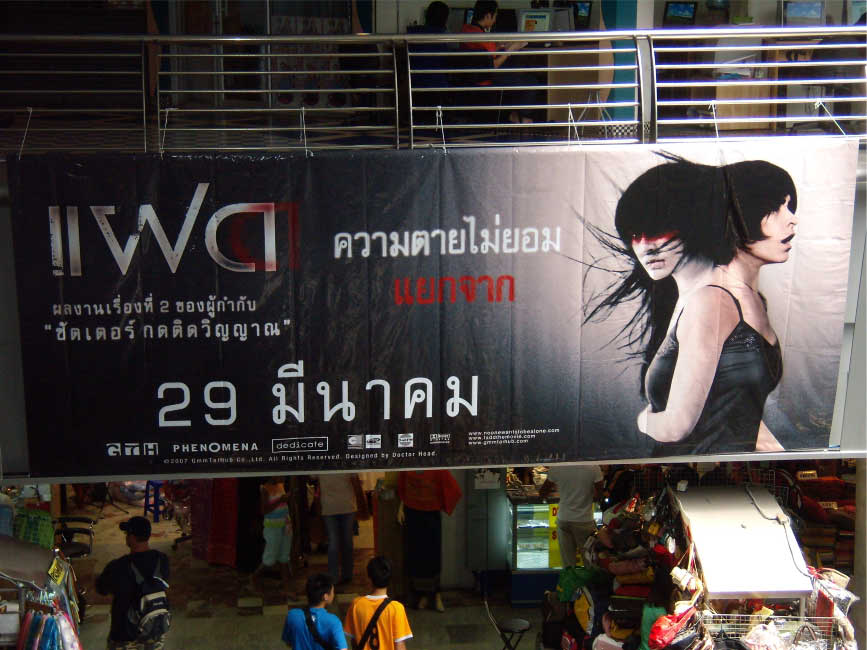

Alone is another ghost tale with many of the scares emanating from the usual arsenal of checkpoints – old creaky house, looking into a mirror, lying in a bath, being in an elevator, a dog barking at something not seen, something next to you in bed – but for the most part these work quite well creating an unsettling mood of constant edginess and over your shoulder dread. Much of this effectiveness is due to the two directors wrapping the scares within the context of a truly poignant and heartrending back story that is parsed out slowly to the audience as the film progresses.
Pim (the very Western looking Marsha Wattanapanich) is living in Korea with her boyfriend Wee (Vittaya Wasukraipaisan) and they are celebrating her birthday with friends. One of the friends is an amateur fortune teller and after laying down the cards she tells Pim that “Something you lost is about to return to claim a broken promise”. Not long afterwards, Pim receives the news that her mother has had a stroke and is in a hospital in Bangkok. The two of them return to Thailand to care for the mother but to also face the past they were trying to escape. Pim is horrifically burdened by guilt – she was one of a pair of conjoined twins – intensely close ones and Pim had been extremely protective of her sister – but eventually she decided to be physically separated. Her twin, Ploy, unexpectedly died because of this. Pim cautiously returns to her old home that is full of memories and mementos of her childhood, but it also seems to contain something else – anger, bitterness and perhaps a spirit in need of revenge or resolution.
Very nicely shot and briskly paced, the film appears to be a step up from the low budget feel of Shutter though in reality the vast majority of it takes place within a few locations. There are many small touches that add effectively to the gloomy mood of the film as well – a pair of porcelain ballerina’s joined at the hip, the figure 8 appearing in the steamed bathroom, the extra footprints in the sand, double images, old photos – it was clearly a film that the directors thought through carefully on every level. I will be curious to see how people compare this to their first effort, but I thought it was much better in many ways – the directors have shed their Japanese influences and given us a film that gnaws at your bones with its sad troubling case of the past catching up with the present.
Film cardboard cutout at the theater
My rating for this film: 8.0
* - information gathered from an article by Kong Rithdee in the Bangkok Post, 3-23
The term Siamese Twins originated around 180 years ago from a pair of conjoined twins called Chang and Eng who came from Thailand and became famous when PT Barnum put them in the circus and toured with them around America.